UPDATE: Friday, December 19th, 2014
The 5th phase of the COATS project came to a close recently. The project focused on technology transfer, identification of future sites to deploy Bluetooth readers in support of determining chain-up area delays, a survey of automated safety warning devices and the development of a regional ICM planning process.
The Western States Forum continued to serve as a dynamic technology transfer platform with COATS Phase 5 supporting the 6th through 9th annual Forums. Each year, the Forum has been distinguished by detailed, informative technical presentations and demonstrations that describe how actual rural ITS solutions were developed. Speakers share successes, problems, and failures so participants learn what does and doesn’t work and why. The Forum continues to attract a diverse audience. Participants in the last four Forums have come from seven different states (CA, ID, MT, NV, OR, TX, WA), with Texas being a new addition to the list of participant states. Along with the seven different states, attendees represented Caltrans Districts 1 through 10, several Caltrans divisions, five universities, the California Highway Patrol, a city public works department, the FHWA, the USDOT ITS Joint Program Office, and the Southwest Research Institute.
Three incubator projects were completed under COATS Phase 5: development of a regional ICM planning process, a survey of automated safety warning devices, and chain-up delay tracking with Bluetooth technologies.
The regional ICM planning work developed an overall framework for that process and then demonstrated how alternative routes to address ICM events could be identified. The research started by examining current approaches to ICM in an urban context and determining whether these could be transferred to a rural application if an agency was interested in doing so. It was determined that the current approach to urban ICM did not lend itself to a direct regional application, so a regional planning approach was developed by adapting components of the urban approach. The planning process developed by the research team is shown below:
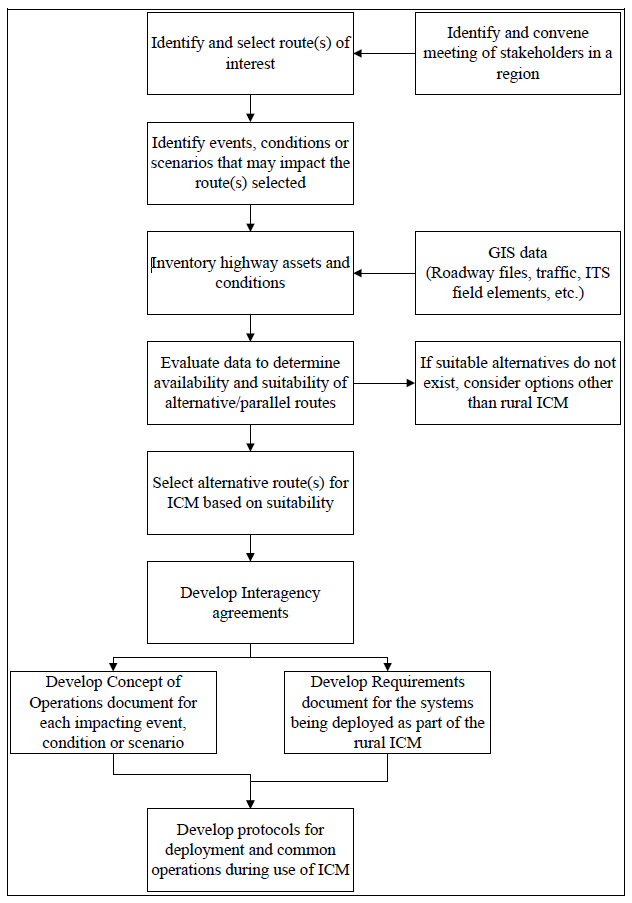
After the planning process was developed, it was demonstrated using GIS data to identify alternative routes to address potential ICM events. The COATS Steering Committee identified two study corridors of interest that cross state borders: 1) U.S. 395 from Mojave, California, to Carson City, Nevada, which could be impacted by construction, wildfires and perhaps volcanic activity; 2) SR 299 – U.S. 395 from Arcata, California, to the junction of U.S. 395 and U.S 20 in Oregon, which could be affected by weather and wildfire activity.
Using the planning process approach, GIS route identification and optimization tools were used to determine alternative routes based on travel times, distance and capacity. The use of GIS in performing this task demonstrated its utility in evaluating road network data over a large geographic area in support of regional ICM planning activities. For the study cases examined, comparable alternative routes were identified in GIS that provided reasonable distance and travel times in the event that the study corridor was closed or had restricted traffic flow.
For more information about the Regional ICM planning project, and to read the final report and recommendations, click here. The report is also on the COATS Phase 5 documents page and the COATS project documents page.
Work completed on a survey of safety warning devices identified ice, wind, visibility and general weather, animal-vehicle crashes, curve speed warning, slowed and stopped traffic or queuing, truck escape ramp occupancy, flood warning and other site-specific systems that have been deployed in the western U.S. The intent of the majority of these systems was to provide drivers with advanced warning of a hazardous condition so that the driver may be prepared when that condition is encountered, detour around the condition via other routes, or halt the trip until it can resume safely. A key feature shared by these systems was that they were automated and self-contained in the field. Read more about this project in the June 30, 2014, COATS project update. You can review the synthesis here, on the COATS Phase 5 documents page, or the COATS project documents page.
| The states contacted and their respective number of systems are as follows: | The deployment types and the problems they targeted were quite diverse. The following types of systems were identified: |
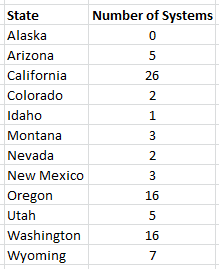 |
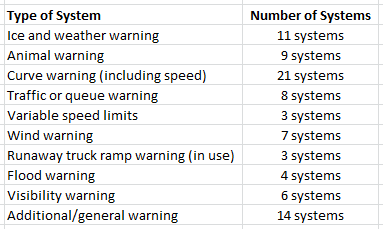 |
The third incubator project conducted during COATS Phase 5 was chain-up delay tracking using Bluetooth technologies. As preliminary work, the project identified the number and location of sites needed to provide sufficient data to accurately determine delay surrounding the Siskiyou Summit chain up area along I-5 in northern California. This project will continue in COATS Phase 6 with the actual deployment of Bluetooth devices at the selected locations. Data from these logging devices will be used in conjunction with chain control status to develop an algorithm to estimate travel time/delay through the affected area. More details, including a table with the recommended sites for the Bluetooth devices and related information, can be found in the COATS Phase 5 Final Report. The screenshot from the One Stop Shop shows the study area and the images show the backups that can occur when chain restrictions are in place.
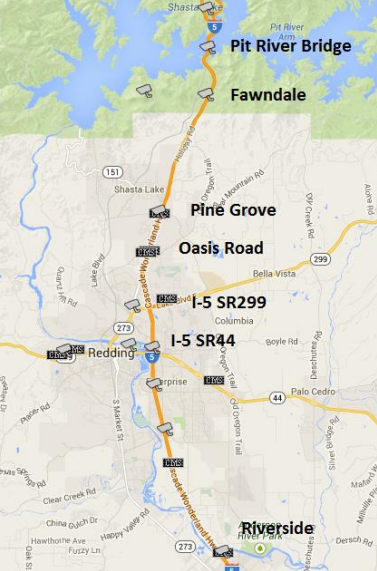
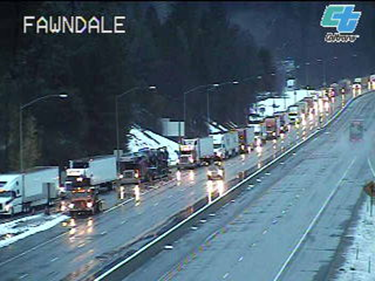
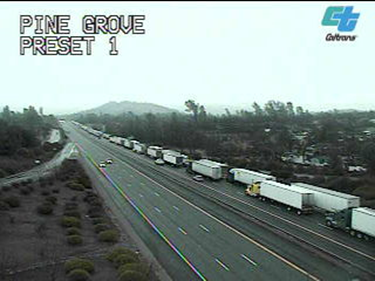
To learn more about the research and technology transfer activities described above, review the COATS Phase 5 final report or the individual project documents on the COATS Phase 5 documents page.

